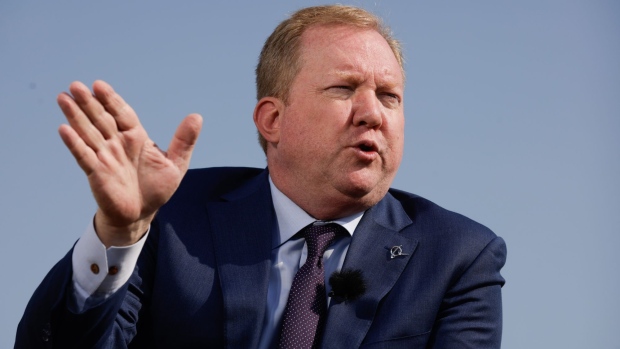Jul 20, 2022
Boeing Commercial Chief Gives Peek Into Work on Next Plane
, Bloomberg News

(Bloomberg) -- While Boeing Co. may not be saying much publicly about the new airplane it’s planning, behind-the-scenes engineering work is progressing, Stan Deal, the company’s commercial airplane chief, said.
The US planemaker has assigned about 1,000 engineers to its product development group, which is spearheading design work on the airplane concept and running computer simulations of the manufacturing system that would build it. The unit is involved in other projects, from Boeing’s efforts to certify the tardy 777X jetliner to its work to wring greater range and payload out of two 787 Dreamliner models, Deal said.
“We don’t advertise this a lot, but all through the downturn we continued to invest -- we didn’t shut the hot water off,” Deal said in an interview at the Farnborough International Airshow, aviation’s first major trade expo since the pandemic flattened air travel in early 2020.
The jetliner in its infancy doesn’t have an acronym like MOM or NMA -- the internal nicknames for the midrange jet family that Boeing scrapped in 2020 as Covid and the 737 Max grounding hit its finances. Deal says he refers to the project as the “Next Airplane.”
Boeing has shared little of how or when it plans to address the gap between its largest narrowbody 737 Max and smallest widebody 787 Dreamliner. Rival Airbus SE meanwhile has been racking up sales for its A321neo models, which targets the same market for midrange aircraft.
With the lucrative narrow-body market tilting toward Airbus, some analysts have questioned why the US planemaker isn’t moving more urgently. Boeing Chief Executive Officer Dave Calhoun recently estimated it would take at least another couple of years to test and mature the digital tool set that it intends to use to streamline manufacturing and boost quality on its new airplane program.
“That frees Airbus to grab 70% of the market, since everyone wants an A321neo,” analyst Richard Aboulafia of AeroDynamic Advisory wrote last month. “Also, since it will have been 20 years since Boeing launched an all-new jetliner, it isn’t clear whether they’ll have the talent needed to start a program in two years anyway.”
Trust Issues
Convincing suppliers to share data so that an aerospace manufacturer can digitally track manufacturing capacity and quality is another another obstacle, said Torsten Welte, a global vice president for SAP SE. “There are big issues around intellectual property and trust,” especially for sub-contractors that have been squeezed by demands for discounts over the past decade, he said.
Boeing has tested some of the digital tools it intends to employ on the next airplane with military aircraft like the new T-7 trainer jet. But applying them to a commercial jetliner is a far more complicated undertaking given the higher volume of parts on a commercial jet and the complexity of tailoring each to customer demands for cabin layout and equipment, Deal said.
The planemaker has seen the power of digital tools and big data as it’s worked on a new flight management system, Deal said. “We’ve done over a million hours of digital testing, running through every fault scenario you can think about to see if the system is stress-tested before we ever put it on an airplane.”
Deal’s division will take a similar approach to the Next Airplane and its production system. Boeing will lock in the architecture, then test and work on it at a large scale before engineers start on the drawings. “If we do that right on the next airplane, then the next one and next one after that will be advantaged,” Deal said.
©2022 Bloomberg L.P.





